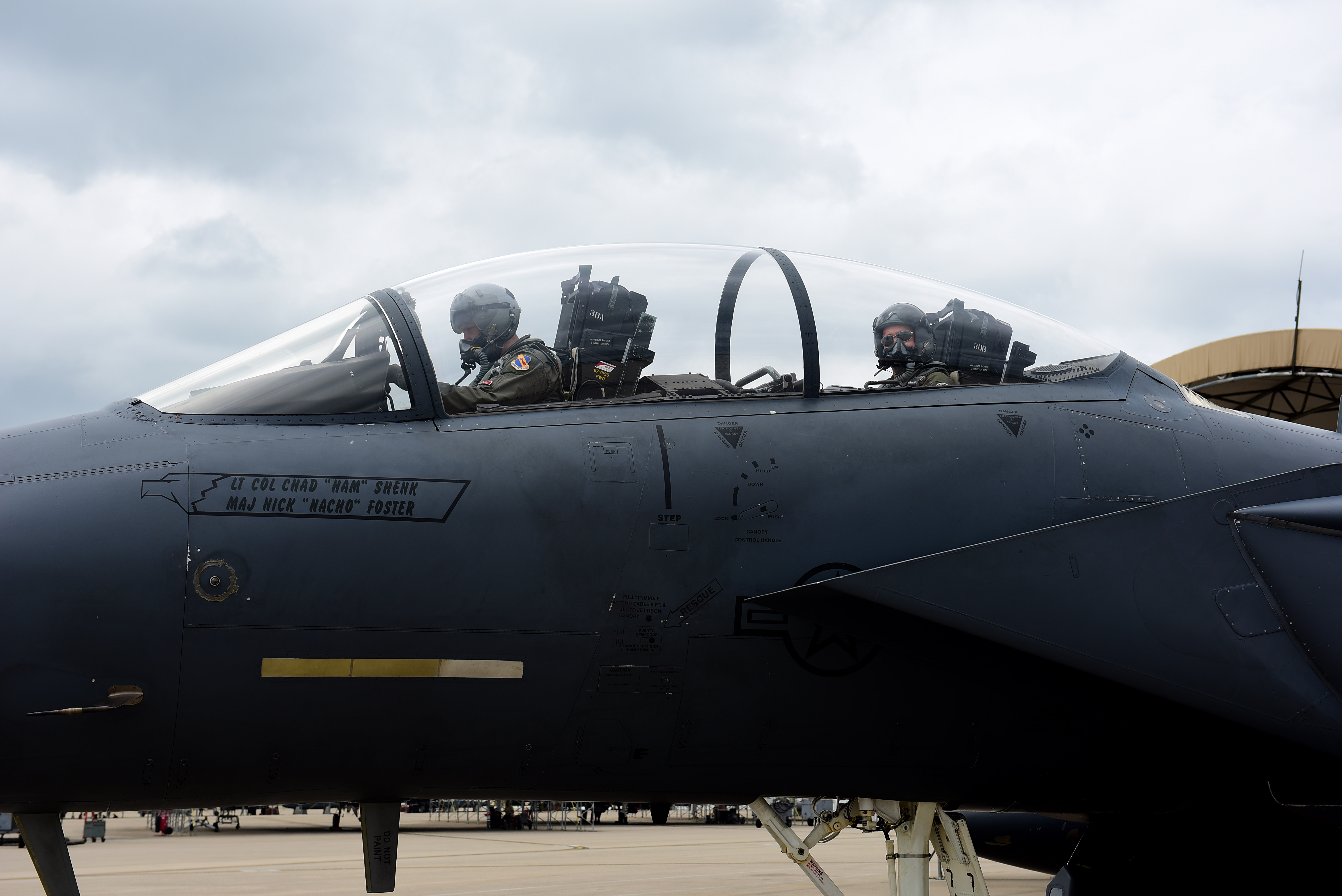Lt. Col. Ryan Ismirle, 333rd Fighter Squadron director of operations, left, and Richard Lambert, 4th Fighter Wing community support coordinator, right, prepare to taxi in an F-15E Strike Eagle, Aug. 28, 2017, at Seymour Johnson AFB, N.C. USAF photo by A1C Kenneth Boyton.
The Air Force will let certain aircrew remain at select bases as a way to improve quality of life for its pilots in the face of a growing fighter shortage in the service.
Beginning Friday, the Air Force is implementing a Second Assignment In-Place Pilot Program for Active Duty, late-career fighters and weapon system officers at a selection of Air Education and Training Command, Air Combat Command, and Air Force Materiel Command bases, according to an Air Force release.
The effort is a part of “a wide range of initiatives” the Air Force is implementing to help slow a growing pilot shortage that impacts both the fighter and mobility pilot ranks. The Air Force reported it was 1,544 pilots short of its requirement at the end of Fiscal 2016, with that number expected to increase. The Air Force has met with airline executives to try to address the national pilot shortage and find ways to keep pilots in uniform. It has also expanded aviation bonuses and is working to increase flying hours to keep pilots in their cockpits.
“We’re in a retention crisis, which means changing the way we do business such as looking at an expanded bonus window as well as trying something new like the Second Assignment In-Place Pilot Program,” Lt. Gen. Chris Nowland, the deputy chief of staff for operations, said in the release.
Airmen in career fields 11F (fighter pilot) and 12F (fighter combat systems officer) with less than a three-year Active Duty service commitment who are instructor or evaluator pilots are eligible for the new program if they are lieutenant colonels or lieutenant colonel selects with 17 or more years of total service. Also, majors not selected for promotion with 14 or more years of service could be eligible.
Wing commanders at the selected bases will implement the program at approved units. If the pilot program is effective, it could be expanded to other career fields, according to the Air Force.
The selected bases are:
Air Education and Training Command
- 12th Flying Training Wing, Randolph Air Force Base, Texas
- 14th Flying Training Wing, Columbus AFB, Miss.
- 81st Fighter Squadron, Moody AFB, Ga.
- 33rd Fighter Wing, Eglin AFB, Fla.
- 47th Flying Training Wing, Laughlin AFB, Texas
- 56th Fighter Wing, Luke AFB, Ariz.
- 54th Fighter Group, Holloman AFB, N.M.
- 550th Fighter Squadron, Kingsley Field, Ore.
- 71st Flying Training Wing, Vance AFB, Okla.
- 80th Flying Training Wing, Sheppard AFB, Texas
Air Combat Command
- 53rd Wing, Eglin AFB, Fla.
- 4th Fighter Wing, Seymour Johnson AFB, Fla.
- 325th Fighter Wing, Tyndall AFB, Fla.
- 355th Fighter Wing, Davis-Monthan AFB, Ariz.
Air Force Materiel Command
- 96th Test Wing, Eglin AFB, Fla.
- 412th Test Wing, Edwards AFB, Fla.
For more about the pilot shortage, read Pilot Shortage Back with a Vengeance from the August 2016 issue of Air Force Magazine.
